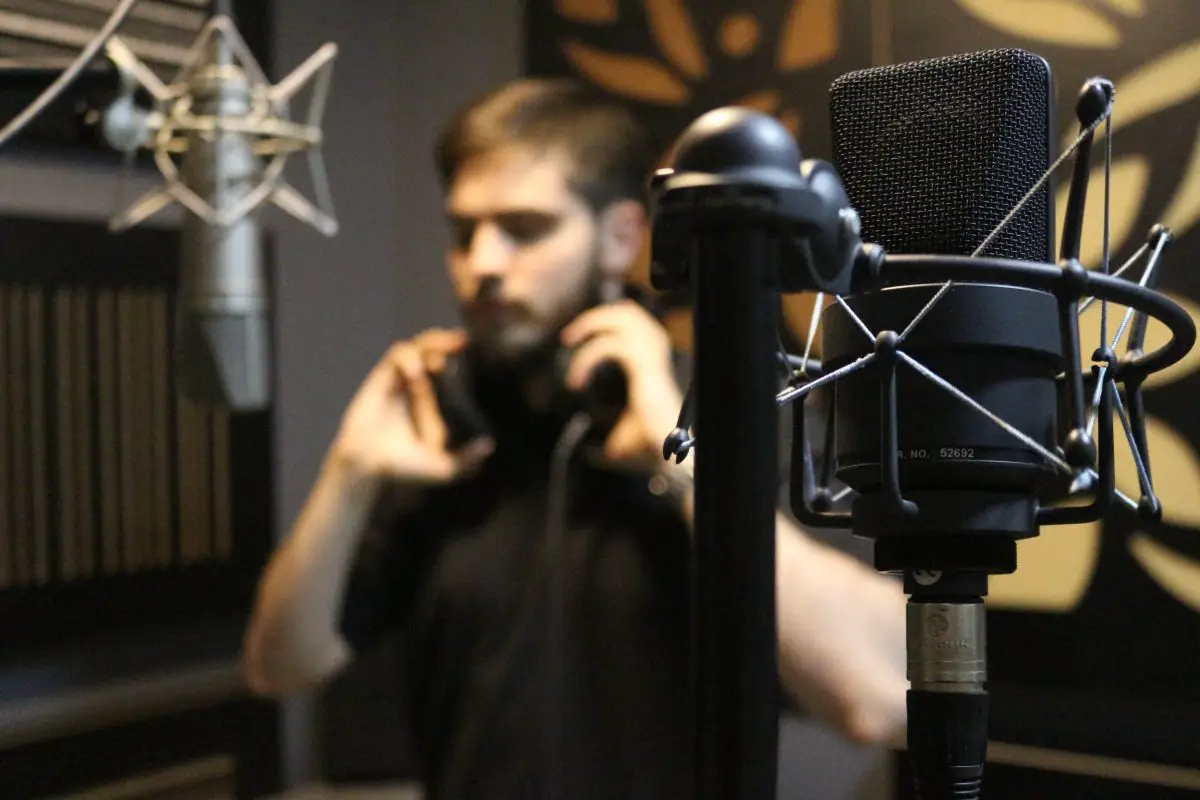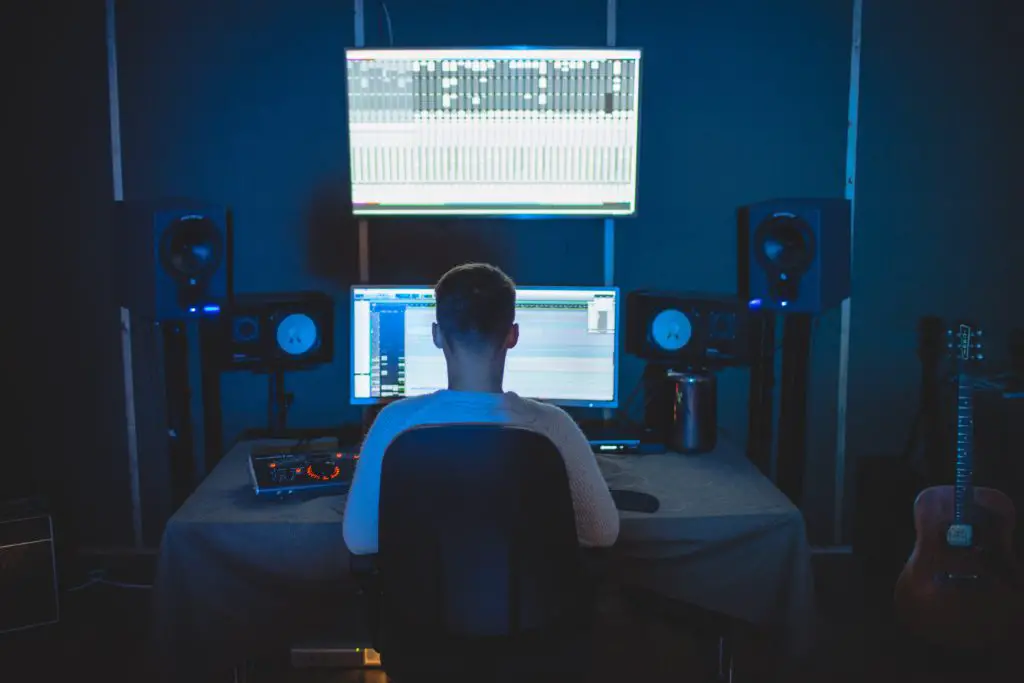Are you ready to take your music recording to the next level? Let’s dive into the world of doubling, a technique that adds depth, punch, and magic to your tracks. It’s time to unveil the secrets behind the music industry’s best-kept secret. This beginner-friendly guide will cover everything you need to know about doubling in music recording.
So, buckle up and get ready to explore the wondrous world of doubling, where we’ll discuss enhancing your overall sound, improving vocal performances, and making your tracks sound like they’ve been sprinkled with a little bit of audio fairy dust. Let’s double down on doubling and see how it can transform your music!
What is doubling in music recording? Doubling is a technique in music recording where multiple takes of the same part are layered together to create a richer, fuller sound. This method enhances the overall audio experience, improves vocal performances, and contributes to a more dynamic stereo image.
What is doubling, and why is it important?
Doubling is a technique that involves recording multiple takes of the same part and layering them together. This creates a richer, fuller sound that can add depth, punch, and magic to your tracks. In music recording, doubling is commonly used to enhance the overall sound, improve vocal performances, and affect the stereo image.

Doubling is a powerful tool in music recording that can transform your tracks and take them to the next level.
By layering multiple takes, a wider and more immersive sound is achieved, creating a more dynamic and captivating mix. Doubling can also be applied to various instruments, not just vocals, to achieve a fuller and richer sound. Techniques for doubling in music recording include recording multiple takes, using effects such as chorus or delay, and layering the original part with an octave above or below it.
Doubling is a powerful tool in music recording that can transform your tracks and take them to the next level. It’s an essential technique to have in your toolbox as a music producer or recording artist.
AKAI Professional MPK Mini MK3

AKAI Professional MPK Mini MK3
What are the types of doubling in music recording?
There are different types of doubling in music recording. Each type of doubling has its own unique characteristics and can be used to create different effects in the mix. By experimenting with these different types of doubling in music recording, you can find the ones that work best for your specific project and create a unique and captivating sound.
1. Natural doubling
This involves recording multiple takes of the same part, usually with slight variations in timing, pitch, or inflection. These takes are then layered together to create a richer and fuller sound.
2. Artificial doubling
This type of doubling uses effects such as chorus or delay to simulate the doubling effect. The chorus adds thickness and depth to the sound by creating a slightly delayed and modulated copy of the original signal. Delay creates an echo effect that can enhance the stereo image.
3. Octave doubling
This technique involves layering the original part with an octave above or below it. This creates a more powerful and dynamic sound, especially in the lower or higher registers.

Advantages and disadvantages of doubling
Doubling, a technique widely used in music recording, offers advantages and disadvantages. Let’s explore these aspects to understand the impact of doubling on the overall sound and production quality.
Advantages
Doubling can bring several benefits to music recordings, enhancing the final result in various ways:
- Increased thickness and depth: Doubling a vocal or instrumental track adds richness and depth to the sound, making it more pleasing to the ear.
- Enhanced stereo image: By duplicating a track and panning each version to opposite sides of the stereo field, doubling can create a wider, more immersive listening experience.
- Improved precision and timing: When a musician doubles their performance, it can help tighten up their timing and ensure greater precision in the recording.
- Added emphasis and impact: Doubling can be particularly effective for emphasizing specific sections or phrases in a song, providing a boost of energy and impact.
- Masking imperfections: If a vocalist or instrumentalist has slight imperfections in their performance, doubling can help mask those flaws and create a smoother, more polished final result.
Disadvantages
While doubling can be beneficial, it also has some potential drawbacks that should be considered:
- Loss of naturalness: Doubling can sometimes make the sound appear less natural, especially if overused or applied incorrectly. It may strip away some of the rawness and authenticity of a performance.
- Increased recording time and effort: Implementing doubling requires additional recording and editing time, as well as careful alignment and synchronization of the duplicated tracks.
- Phase cancellation issues: When doubling, it’s essential to ensure proper phase alignment between the duplicated tracks. If not handled correctly, phase cancellation can occur, resulting in a weaker and thinner sound.
- Artistic considerations: Doubling may not suit every musical style or genre. Some genres, like minimalistic or ambient music, may benefit more from a cleaner, less layered approach.
- Mixing challenges: Doubling adds complexity during the mixing stage, as it requires balancing and blending the duplicated tracks to achieve a cohesive and well-integrated sound.
Considering these advantages and disadvantages can help musicians and producers make informed decisions when deciding whether to incorporate doubling in their music recordings. Experimentation and careful application of doubling techniques can lead to enhanced musicality and a more engaging listening experience.
Techniques for doubling
Here are some techniques for doubling in a music recording:
1. Recording multiple takes
This is the most common technique for doubling in music recording. Simply record multiple takes of the same part and layer them together. This creates a richer, fuller sound that can add depth and punch to your mix.
2. Using effects such as chorus or delay
These effects can simulate the doubling effect by creating the illusion of multiple parts. Chorus adds a thick, lush sound by delaying and modulating the original signal, while delay creates an echo effect that can enhance the stereo image.
3. Layering the original part with an octave above or below it
This technique adds a sense of depth and fullness to the sound by layering the original part with an octave above or below it. This can create a more powerful and dynamic sound, especially in the lower or higher registers.
4. Combining natural and artificial doubling
You can combine natural doubling (recording multiple takes) with artificial doubling (using effects) to create a more interesting and varied sound. This can give your tracks more depth and complexity, making them stand out from the crowd.
5. Using different microphone placements
Experimenting with different microphone placements can also help create a more interesting and varied sound. For example, placing one microphone close to the singer and another farther away can create a more natural and spacious sound.
These techniques for doubling in music recording can help you create a more professional and dynamic sound. By experimenting with different techniques, you can find the ones that work best for your specific project and create a unique and captivating mix.
Conclusion
So, are you ready to double down on your music recording game? It’s amazing how a bit of doubling magic can transform your tracks from flat to fantastically full. Just remember, with great power comes great responsibility – so use your new-found doubling knowledge wisely, and you’ll be well on your way to creating sonic masterpieces.
Did we strike the right chord with our explanation of doubling in music recording? Let us know in the comments section below – I read and reply to every comment. If this article struck a chord with you, share it with a friend, and don’t forget to explore my full blog for more musical tips and tricks. Thanks for reading, and may the power of doubling ever be in your favor!
Key takeaways
This article covered doubling in music recording. Here are some key takeaways:
- Doubling is a technique in music recording that involves layering multiple takes of the same part to create a richer, fuller sound.
- It can enhance the overall sound, improve vocal performances, and affect the stereo image.
- There are different types of doubling, including natural, artificial, and octave doubling.
- Doubling can be applied to various instruments, not just vocals, to achieve a fuller and richer sound.
- It is commonly used in many music genres to enhance the overall audio experience and create a more captivating mix.
- Techniques for doubling in music recording include recording multiple takes, using effects such as chorus or delay, and layering the original part with an octave above or below it.
- Some potential challenges of doubling include phase cancellation and timing issues, but these can be overcome with careful recording and mixing techniques.
- Doubling is a powerful tool in music recording that can transform your tracks and take them to the next level.















